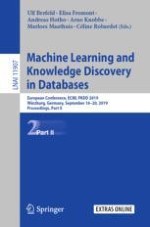2020 | OriginalPaper | Buchkapitel
Hyper-Parameter-Free Generative Modelling with Deep Boltzmann Trees
verfasst von : Nico Piatkowski
Erschienen in: Machine Learning and Knowledge Discovery in Databases
Aktivieren Sie unsere intelligente Suche, um passende Fachinhalte oder Patente zu finden.
Wählen Sie Textabschnitte aus um mit Künstlicher Intelligenz passenden Patente zu finden. powered by
Markieren Sie Textabschnitte, um KI-gestützt weitere passende Inhalte zu finden. powered by
